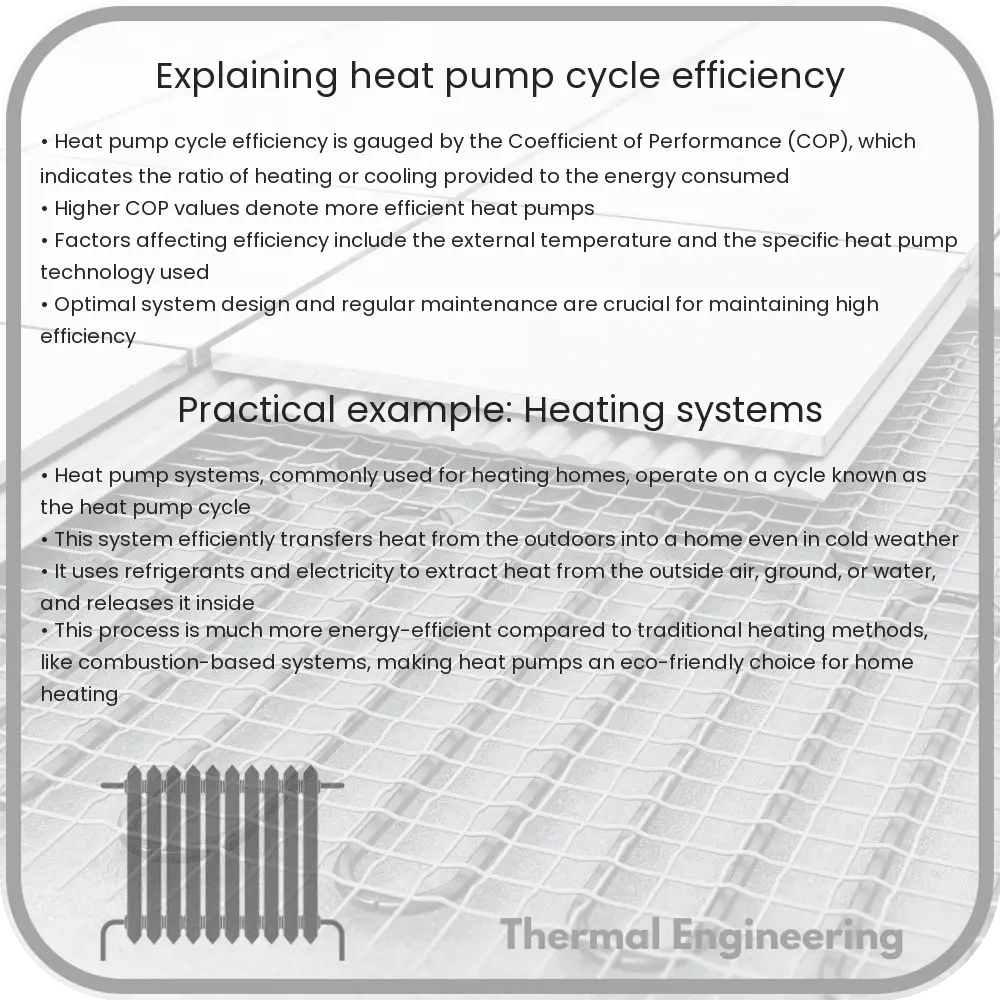Learn about the efficiency of heat pump cycles, which are crucial in HVAC systems for effective heating and cooling.

Exploring the Efficiency of Heat Pump Cycles
Heat pumps are commonly used devices in heating, ventilation, and air conditioning (HVAC) systems that transfer heat from one place to another by using a refrigerant under varying conditions of pressure and temperature. These devices operate on what is known as a heat pump cycle. Understanding the efficiency of this cycle not only helps in choosing the right heat pump but also improves overall energy management in residential and commercial settings.
Basics of the Heat Pump Cycle
The operation of a heat pump cycle revolves around four key components: the evaporator, the compressor, the condenser, and the expansion valve. The cycle involves the following steps:
- Evaporation: The refrigerant absorbs heat at low pressure in the evaporator, causing it to evaporate into a low-temperature vapor.
- Compression: The vapor is then compressed by the compressor, which increases its pressure and temperature.
- Condensation: The high-pressure, high-temperature vapor then flows through the condenser where it releases the absorbed heat and condenses into a liquid.
- Expansion: Finally, the high-pressure liquid passes through the expansion valve where its pressure is reduced, cooling it down before it returns to the evaporator to repeat the cycle.
Efficiency in a heat pump cycle is generally gauged by measuring the coefficient of performance (COP), which is the ratio of the heat output to the electrical energy input.
Understanding Coefficient of Performance (COP)
The coefficient of performance (COP) of a heat pump is a crucial measure of its efficiency. It is defined as:
COP = Qout / Win
where Qout is the amount of heat delivered by the heat pump (in joules or watts) and Win is the work input to the compressor (also in joules or watts).
Higher COP values indicate a more efficient heat pump as more heat is transferred per unit of work input. Typical COP values range from 3 to 5, meaning a heat pump can transfer 3 to 5 times more heat energy than the electrical energy it consumes.
Factors Affecting the Efficiency of Heat Pump Cycles
Several factors can influence the efficiency of a heat pump cycle:
- Temperature Difference: The efficiency tends to decrease as the temperature difference between the heat source (such as the air or ground outside) and the heat sink (inside environment) increases. This is due to larger energy required to maintain the heat flow against a greater thermal gradient.
- Quality of the Installation: Improper installation can lead to increased energy consumption and lower the COP. This includes issues like inadequate sizing, poor insulation, or incorrect placement of components.
- Maintenance: Regular maintenance is crucial for optimal performance. Clogged filters, leaky ductwork, or low refrigerant levels can all diminish efficiency.
- Type of Refrigerant: The type of refrigerant used can affect the efficiency as different refrigerants have different thermodynamic properties that impact the heat absorption and release processes.
Through understanding and optimizing these factors, the efficiency of heat pump systems can be significantly improved. This not only leads to reduced energy bills but also contributes to environmental sustainability by minimizing the usage of electrical energy and the associated emissions.
Conclusion
Heat pumps are a vital technology in modern HVAC systems. Understanding the efficiency of heat pump cycles and the factors that influence it is crucial for engineers, architects, and end-users aiming to enhance energy efficiency and system performance. With continued advances in technology and proper system management, heat pumps will remain integral to energy management strategies in both residential and commercial buildings.
Exploring and improving heat pump cycle efficiency not only saves costs but also aligns with global energy conservation and sustainability goals.